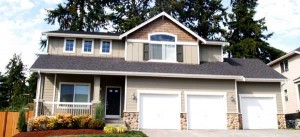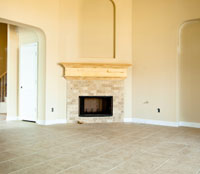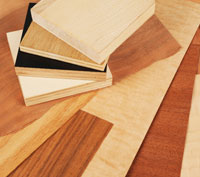A Wood Moisture Meter for All Climes
 In this diverse era, architects, builders, and inspectors are increasingly aware of moisture content (MC) as it is measured not only by wood moisture meters, but also by a range of moisture measurement products. The industry is broadening the boundaries of traditional moisture management in building structures.
In this diverse era, architects, builders, and inspectors are increasingly aware of moisture content (MC) as it is measured not only by wood moisture meters, but also by a range of moisture measurement products. The industry is broadening the boundaries of traditional moisture management in building structures.
Diversity in Wood Moisture Meters
Wood MC management is a natural balancing act. However, as modern building design embraces new and varied building materials, MC management is still an essential part of providing durable project results. Assessors use wood moisture meters to measure the percentage of moisture in wood, also known as its MC. Lumber mills and building contractors have traditionally relied on their own forms of moisture meters to verify the dryness of materials.
 Specialized moisture meter products can also provide comparative (relative only) MC readings for other building materials: stucco, drywall, ceramic tile, shingles, and linoleum, to name a few. These inspection meters do not provide conclusive, accurate MC readings on the building materials measured; they do, however, give relative, qualitative MC readings to those who need it. This can be useful for contractors whose regional climates dictate more reliant use of other building materials besides wood.
Specialized moisture meter products can also provide comparative (relative only) MC readings for other building materials: stucco, drywall, ceramic tile, shingles, and linoleum, to name a few. These inspection meters do not provide conclusive, accurate MC readings on the building materials measured; they do, however, give relative, qualitative MC readings to those who need it. This can be useful for contractors whose regional climates dictate more reliant use of other building materials besides wood.
Moisture meter products also utilize different methodologies. Pin-style moisture meters contain pins or probes which are inserted into the material, while pinless moisture meters measure the MC using an advanced wave technology which is non-damaging to the wood. Some meters feature analog display MC readings, while other meters are programmable and have digital displays.
Diversity of Wood Building Materials
 There is expanding diversity even within the wood building domain. Engineered wood flooring manufacturers already build flooring with selected wood species on the floorboard face, but with medium or high-density fiberboard (MDF) at the center and possibly even a different wood species on the back (bottom) of the board. All these distinct layers of different wood species and/or wood products within an engineered flooring board may have varying MC characteristics. Manufacturers know this and try to account for it. It bears mentioning that all wood products must be measured for their MC to prevent moisture-related problems from occurring in the future.
There is expanding diversity even within the wood building domain. Engineered wood flooring manufacturers already build flooring with selected wood species on the floorboard face, but with medium or high-density fiberboard (MDF) at the center and possibly even a different wood species on the back (bottom) of the board. All these distinct layers of different wood species and/or wood products within an engineered flooring board may have varying MC characteristics. Manufacturers know this and try to account for it. It bears mentioning that all wood products must be measured for their MC to prevent moisture-related problems from occurring in the future.
Eco-flooring is booming, too. Cork and bamboo are natural possibilities in hybrid engineered floors, but each has its own distinct MC measurement needs. In addition, adhesives, finishes, and additives are going all-natural. These newer products need to be compatible with the building materials that they serve to enhance the end products’ service life expectancies. As ecological change continues to alter the construction sector, moisture management issues will continue to emerge as 21st-century concerns.
Throw climate change into the mix, and even all-familiar wood species become subject to enhanced MC measurement and management control.
Diversity of Application
People are becoming more educated, and conversant, on the multiple ways that a wood moisture meter can serve many purposes. Therefore, the wood moisture meter is no longer solely a professional’s domain. Wood flooring owners and hobbyists can easily apply MC measurement and assessment results to their ongoing maintenance of wood.
For areas where wood is not the main staple in the building trade, building inspectors can now use specialized building inspection moisture meters to measure building materials such as concrete, tile, or stucco to obtain comparative, relative MC readings. When structures, and the moisture within them, require code certification, inspectors are valued by the integrity of their moisture assessments. Safety and reliability depend on it.
Where there is diversity, let there be diversity. The world surrounding the wood moisture meter has changed the tool itself.
Committed to your search for quality lumber and wood products and the successful completion of woodworking, installation, and inspection projects through the use of moisture meters.
